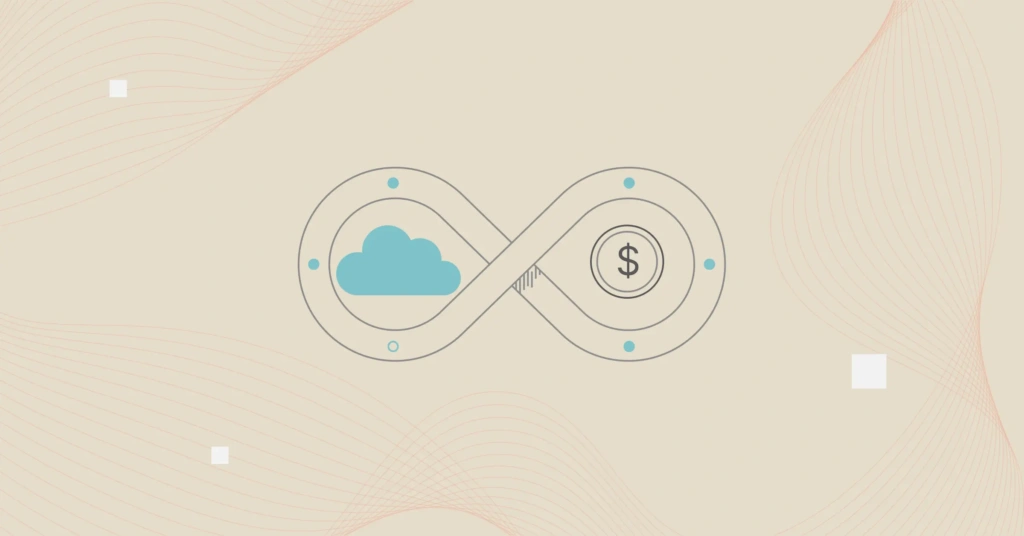Your customer renewal pricing strategy can make or break your business.
You can create the best product in the world, market it masterfully, and provide exceptional customer service, but if your prices aren’t where they need to be, either your customers will churn or you’ll wind up spending way too much money to support a proportionally small revenue stream. Either way, your company will struggle to make ends meet.
Luckily, the tools you need to walk that razor-thin line of appropriate contract renewal pricing are already in your hands if you’re a CloudZero customer.
Our resident VP of Customer Success, Kunal Rao, is here to show you how cloud cost optimization — and the unit costs that optimization is based upon — can and should form the backbone of your customer pricing and renewal strategy.
Here’s How To Use Cost Optimization To Renew Client Contracts With Confidence
The first step is to provide accurate cloud cost data to your team.
To figure out your pricing sweet spot, you need to know how much you spend per customer on each major product and feature, both as an average figure and on a detailed, per-customer basis.
With this information, you can decide if you’re charging each customer appropriately when it comes time to renew.
Arriving at the granular data you need to make those calculations is relatively simple. If you use our CloudZero platform, we’ll walk you through the process of collecting the data you need on the metrics of your choice.
Having the actual conversations with your customers, however, is part art and part science, as you’ll see below.
|
The good news is, you can use all this data you’ve collected in numerous helpful ways. After all, think of the people in your company who care about cost. Kunal explains, “Your engineering leaders want to understand how much they’re contributing to costs so they can find ways to optimize spending in the future. Finance wants to know how much future projects will cost so they can budget appropriately. Other business stakeholders like product owners want to use unit economics to arrive at a cost per product or cost per feature, which they can then use to build pricing and packaging tiers. And customer renewal specialists need to understand the company’s margin per customer, margin per customer per feature, and so on.” It’s those last couple of metrics you’ll want to dive into when it’s time to examine your customer renewal pricing, but all are equally important for the overall health of your business. |
Use data transparency to guide your customer renewal conversations
At CloudZero, we like to lead by example — or “drink our own champagne,” as Kunal puts it. We use our own platform to manage our cloud costs, for one thing, and we model the advice we give to our clients on the strategies that have worked (or not worked) in our experience.
That policy even extends as far as contract renewals.
Not only do we renew our own customer contracts on a regular basis, but we also help our customers find the data they need to manage their own contract pricing using the same tools that we find most effective.
“Nine out of ten CloudZero customers are in the software as a service (SaaS) space, with products of their own that they operate within one or multiple cloud environments,” Kunal explains. “They also typically have a person in their company doing my exact role, which is handling onboarding and renewals with their clients.”
This provides a prime opportunity for Kunal to model an optimal way of handling those tricky renewal conversations where prices may need to change.
“When I meet with customers at renewal time, I like to have an informed conversation. I like to say, “Hey. Here’s how much CloudZero makes from you every year. And this is how much we spend to support the services we provide to you. Put the numerator together with the denominator, and you have our margin for your account.”
If the customer is profitable for you and your margins are strong, you can renew the contract at the same price level, and nothing needs to change. But if you find your margins thinning, these conversations are the perfect time to point out the problem.
In other words, knowing your cost and revenue data, in detail, for that specific customer, allows you to enter into informed pricing conversations and find a price point that both helps your bottom line and keeps your customers happy with great service.
Fuel sales and increase customer retention
“Once clients see what is possible with cost data from CloudZero, and they see the transparency we bring to our renewal conversations, they often decide they want to do something similar for themselves,” Kunal points out. “They want to know, ‘How can we have that? What do we need to do to get there?’”
In practical terms, what this means for you is that every conversation you have with your customers—even if it’s just a renewal discussion—is an opportunity to showcase your own product. This is especially true if you build SaaS products that you use during your own daily operations.
Additionally, the more transparent you are with your contract renewal discussions, the more your customers will trust and appreciate you—even when you have to adjust renewal prices.
Use cost data to create a fair pricing tier
Let’s say you keep encountering a particular feature that costs more to support than you’re getting in revenue from the customers who use it. On the other side of the coin, you might notice a feature that’s extremely cost efficient, but located in a higher price tier that only premium customers have access to.
These are both indications that you might need to rebalance your pricing and packaging structures.
“For instance,” Kunal explains, “we can track margin per customer with our awesome unit metrics module. Once usage gets beyond a certain limit, it starts to impact our margins due to the complexity of customer data and the processing time. We understand the cost of that heavy usage up front, so we have the option to restructure our pricing tier to accommodate the heavy usage. Having drank our own champagne, we can see the benefits in-house which makes us all the more confident when we present it to others.”
Follow this example, and you can accomplish the same thing. You’ll get appropriately compensated for the resources you use to support your customers, and your customers have the assurance that your pricing is completely fair and transparent. Everybody wins.
Start Collecting Cost Data For All Your Customers Today With CloudZero
All of the above assumes that you have a reliable way to collect cloud cost data, accurately allocate it, and break it down into unit costs per customer, per feature, per product, and so on.
If you don’t yet have a firm grasp on your cloud costs and you have no way of providing your customers with detailed data on their individual costs, it’s crucial to nail down that data before you have any tricky renewal conversations. Even if you go into the discussion with the best of intentions, any attempt at transparency would at best be a shot in the dark.
 to see how our platform gives you a window into your own cloud costs, so you can in turn provide transparency for your customers.
to see how our platform gives you a window into your own cloud costs, so you can in turn provide transparency for your customers.








